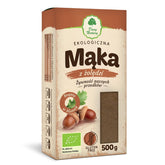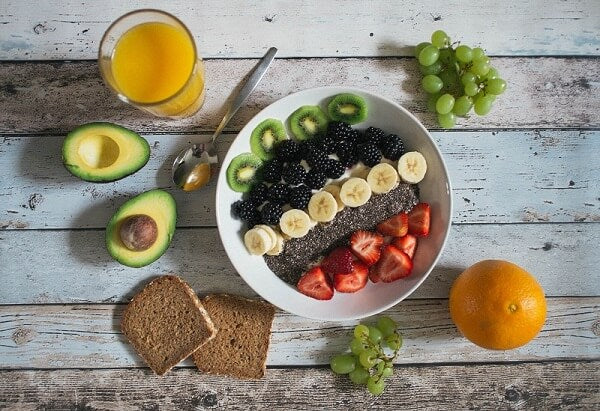The glycemic index in practice. What is it, for whom and how is it used?
CONTENTS
- What is the glycemic index?
- Who is a low glycemic index diet suitable for?
- Which foods have a low glycemic index?
- How do you use the glycemic index in practice?
- Basic principles to be applied in practice
Today's buzzword: glycemic index. Much is being said and written about this indicator these days. It's of interest to people trying to lose weight. Patients with carbohydrate metabolism problems (e.g., diabetes) receive a doctor's recommendation to adhere to the glycemic index when preparing meals. However, the popularity of this topic has led to a distortion of its meaning. We find conflicting information on the internet. So let's take a look at what the glycemic index is, who should include it in their daily diet, and how to do it.
What is the glycemic index?
Foods are classified according to their effect on blood sugar levels. What does this mean for us in practice? Well, there are foods that give us a quick energy boost (glucose burst) after eating, but unfortunately, this value drops even faster below the original level. These are products with a high glycemic index. Other products don't cause such a sharp "kick." Blood sugar is released gradually and, just as gradually, but not as drastically, it will fall. These are products with a low glycemic index. This is clearly visible in the following charts:

Which foods have a low glycemic index?
We already know that focusing on a lower glycemic index for meals can bring health benefits to many of us. Then there's the question of how to tell which foods have a low and which have a high index. There are many tables online that classify products according to this indicator. The most common classifications are high (> 70), medium (55-70), and low (< 55). However, there are a few catches.
First, the glycemic index is an average value. Take bananas , for example, which are often cited as an example of a high-glycemic-index food (in fact, they're quite average). The rate at which blood sugar rises after eating varies from person to person (because we differ in factors such as age and body weight, digestive function of the digestive tract, insulin sensitivity of cells, pancreatic function, physical activity, and metabolic rate). It also depends on the ripeness of the fruit, the time of day, and what we've just done (e.g., exercise), as well as even a single serving of banana. Therefore, it's not enough to blindly stick to the table. It's also worth paying attention to your body.
There's one more "but." More important than the glycemic index itself is the glycemic load, which takes into account the carbohydrate content of the product. Based on their glycemic load, products can be classified as low (<10), medium (11-19), and high (>20). The following table shows a comparison of the glycemic index and glycemic load of products. A flagship example is a watermelon, which has a high index but a low load, not even medium!
How do you use the glycemic index in practice?
However, the glycemic load is not yet a guideline. We rarely eat only one product at a time. Yes, sometimes we catch, for example, a banana and eat it alone as a snack. However, more often we eat meals consisting of various products. Therefore, more important than the glycemic index or glycemic load of a particular product is the glycemic index of the entire dish. This means that even if you eat a product with a high index (for example, boiled potatoes), if you eat a small amount of it, additionally in combination with protein (for example, meat), fat (olives in salad), fiber (vegetables), the glycemic index of the entire dish will be much lower.
This brings us to the heart of the glycemic index. More important than blindly following tables with the index or glycemic load of carbohydrate products is simply the correct preparation and combination of meals with other products.
Basic principles to be applied in practice
- Cooked foods always have a higher glycemic index than raw foods. The longer they are cooked, the higher the index. Therefore, it's worth eating whatever you can raw, such as pasta, groats, and rice, until al dente.
- Processed foods always have a higher glycemic index. Choose natural whenever possible.
- Warm foods have a higher index, so it's worth cooling the meal down a bit.
- When it comes to fruits and vegetables, the less ripe they are, the lower the glycemic index.
- The addition of vinegar, e.g. apple, wine or lemon juice, lowers the glycemic index of dishes.
- Likewise, adding fat and protein to dishes, and especially fiber (potatoes + meat + vegetables + olive oil – remember?), lowers the index value of the entire dish.
- It is best to eat slowly as carbohydrates are released more slowly.
- Fragmented meals have a higher index, e.g. instead of cream soup, choose a more traditional one and instead of a smoothie, choose a fruit salad.
a diagram showing blood sugar levels after a meal - the glycemic index
Who is a low glycemic index diet suitable for?
Are you familiar with the phenomenon of postprandial drowsiness? Or the sudden feeling of hunger after a plate of dumplings with strawberries? This is the effect. Regardless of our health, we can feel the negative effects of a meal with a high glycemic index. Therefore, it's worth paying attention to this indicator from time to time. This way, we can avoid an energy roller coaster for our body.
This phenomenon is even more important for people with carbohydrate metabolism problems. Diabetics or patients with insulin resistance should pay particular attention to the glycemic index in their diet. Their health condition means that excessively high blood sugar levels, as well as rapid drops in blood sugar levels, can be dangerous.
What about people on a diet? Does a low glycemic index promote weight loss? In fact, meals with a lower glycemic index keep us fuller longer, so we snack less often. They also often contain more fiber, vitamins, and minerals, so they're better for our health.
THE PUBLISHER'S CHOICE
Dried plums 1 kg BIOGO
- £6.07
- £6.07
- Prezzo unitario
- / per
Dried White Mulberries 500 g ORGANIC
- £5.06
- £5.06
- Prezzo unitario
- / per
Almonds 1 kg BIOGO
- £10.13
- £10.13
- Prezzo unitario
- / per
Cranberries sweetened with apple juice organic 1 kg BIOGO
- £14.19
- £14.19
- Prezzo unitario
- / per
Dried dates 1 kg BIOGO
- £3.65
- £3.65
- Prezzo unitario
- / per
Unpeeled buckwheat groats 1 kg BIOGO
- £2.44
- £2.44
- Prezzo unitario
- / per
Walnuts 800 g BIOGO
- £7.50
- £7.50
- Prezzo unitario
- / per
Peeled sunflower seeds 1 kg BIOGO
- £2.63
- £2.63
- Prezzo unitario
- / per
PULLED ORGANIC SUNFLOWER SEEDS 1 KG BIOGO
- £3.85
- £3.85
- Prezzo unitario
- / per












































































































































